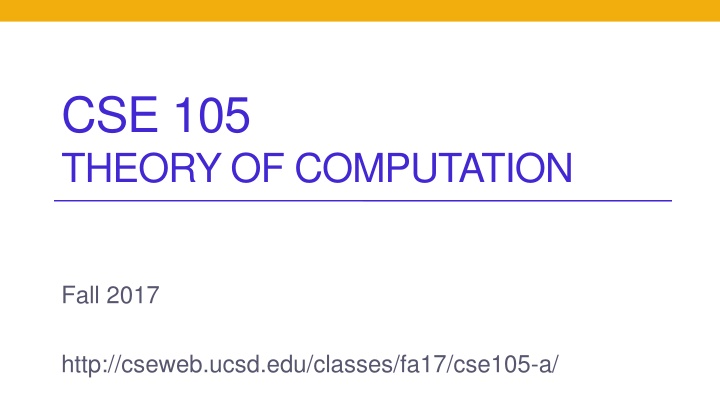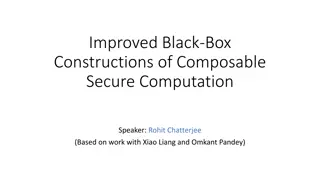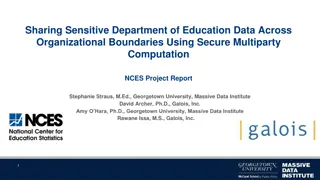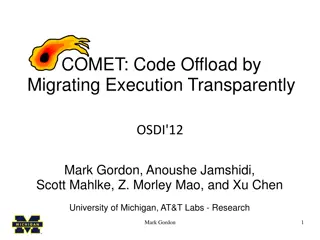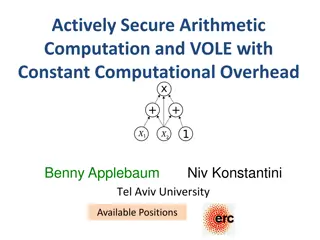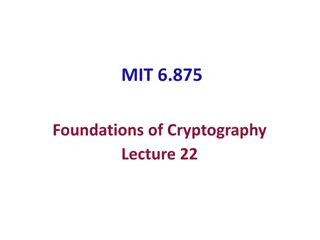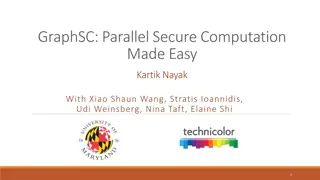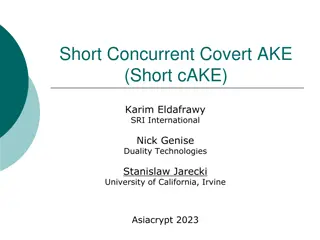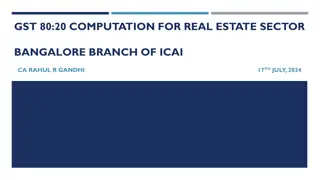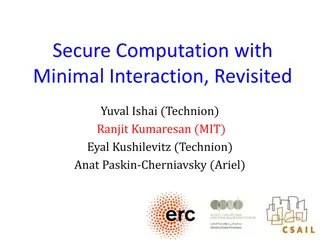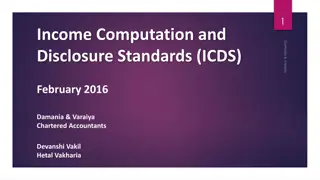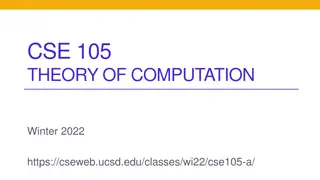Theory of Computation Fall 2017 Learning Goals
This content covers learning goals for the Theory of Computation course in Fall 2017, discussing topics like time complexity, polynomial vs. exponential time, P vs. NP classes, NP-completeness, and reductions in computability and complexity theory.
Download Presentation

Please find below an Image/Link to download the presentation.
The content on the website is provided AS IS for your information and personal use only. It may not be sold, licensed, or shared on other websites without obtaining consent from the author.If you encounter any issues during the download, it is possible that the publisher has removed the file from their server.
You are allowed to download the files provided on this website for personal or commercial use, subject to the condition that they are used lawfully. All files are the property of their respective owners.
The content on the website is provided AS IS for your information and personal use only. It may not be sold, licensed, or shared on other websites without obtaining consent from the author.
E N D
Presentation Transcript
CSE 105 THEORY OF COMPUTATION Fall 2017 http://cseweb.ucsd.edu/classes/fa17/cse105-a/
Today's learning goals Sipser Ch 5.1, 7 (highlights) Construct reductions from one problem to another. Distinguish between computability and complexity Section 7.1: time complexity, asymptotic upper bounds. Section 7.2: polynomial time, P Section 7.3: NP, polynomial verifiers, nondeterministic machines.
Today's learning goals Sipser Ch 5.1, 7 (highlights) Specifically for complexity theory: Define the time complexity class P and name some problems in P Distinguish between polynomial and exponential DTIME Define the class NP and name some problems in NP State and explain P=NP? Define NP-completeness and connect it to P=NP Describe how reductions are used both for questions of decidability and of complexity.
Which of the following is not closed under complementation? A. The set of decidable languages B. The set of undecidable languages C. The set of recognizable languages D. More than one of the above E. None of the above. So far Decidable ADFA EDFA EQDFA INFINITEDFA RevDFA STM RecTM Undecidable ATM ETM EQTM INFINITETM REGULARTM Diagonalization or Reduction Give algorithm!
Reducing sets to one another We saw ATM reduces to HALTTM Given genie G deciding HALTTM, construct solution for ATM: "On input <M,w>: 1. Run G on <M,w>. If rejects, reject. 2. If accepts, run M on w. If accepts, accept; if rejects; reject." What about in the other direction?
Reducing sets to one another Given genie GATM deciding ATM, construct solution for HALTTM: "On input <M,w>:
Not just decidable For a given algorithm working on a given input, how long do we need to wait for an answer? How does the running time depend on the input in the worst-case? average- case? Expect to have to spend more time on larger inputs. What's in common among all problems that are efficiently solvable?
Measuring time For a given algorithm working on a given input, how long do we need to wait for an answer? Count steps! How does the running time depend on the input in the worst- case? average-case? Big-O What's in common among all problems that are efficiently solvable? Time(n)
Time complexity For M a deterministic decider, its running time or time complexity is the function f: N R+ given by f(n) = maximum number of steps M takes before halting, over all inputs of length n. worst-case analysis
Time complexity For M a deterministic decider, its running time or time complexity is the function f: N R+ given by f(n) = maximum number of steps M takes before halting, over all inputs of length n. Instead of calculating precisely, estimate f(n) by using big-O notation.
Time complexity classes TIME(t(n)) = { L | L is decidable by a TM running in O(t(n)) } Exponential Polynomial Logarithm
Why is it okay to group all polynomial running times? Contains all the "feasibly solvable" problems. Invariant for all the "usual" deterministic TM models multitape machines (Theorem 7.8) multi-write
Working with P Problems encoded by languages of strings Need to make sure coding/decoding of objects can be done in polynomial time. Algorithms can be described in high-level or implementation level CAUTION: not allowed to guess / make non-deterministic moves.
Time complexity classes TIME(t(n)) = { L | L is decidable by a TM running in O(t(n)) } Exponential Brute-force search Polynomial Invariant under many models of TMs Logarithmic May not need to read all of input
Which machine model? q0 q0 non- deterministic computation deterministic computation qacc qacc qrej qrej qrej
Time complexity For M a deterministic decider, its running time or time complexity is the function f: N R+ given by f(n) = maximum number of steps M takes before halting, over all inputs of length n. For M a nondeterministic decider, its running time or time complexity is the function f: N R+ given by f(n) = maximum number of steps M takes before halting on any branch of its computation, over all inputs of length n.
Time complexity classes DTIME ( t(n) ) = { L | L is decidable by O( t(n) ) deterministic, single-tape TM } NTIME ( t(n) ) = { L | L is decidable by O( t(n) ) nondeterministic, single-tape TM } Which of the following is (known to be) not true? A. DTIME(n2) is a subset of DTIME(n3) B. DTIME(n2) is a subset of NTIME(n2) C. NTIME(n2) a subset of DTIME(n2) D. More than one of the above E. None of the above
"Feasible" i.e. P Can't use nondeterminism Can use multiple tapes Often need to be "more clever" than na ve / brute force approach Examples PATH = {<G,s,t> | G is digraph with n nodes there is path from s to t} RELPRIME = { <x,y> | x and y are relatively prime integers} Use Euclidean Algorithm to show in P L(G) = {w | w is generated by G} Use Dynamic Programming to show in P where G is any CFG
"Verifiable" i.e. NP Best known solution is brute-force Look for some "certificate" if had one, could quickly check if it works P = NP?
P vs. NP Problems in P (Membership in any) CFL PATH EDFA EQDFA Addition, multiplication of integers Problems in NP Any problem in P HAMPATH CLIQUE VERTEX-COVER TSP SAT
Decidable NP? P CF Regular
Reductions to the rescue Sipser p. 271,276 1970s Stephen Cook and Leonid Levin indepdendently and in parallel lay foundations of NP-completeness Intuitively: if an NP-complete problem has a polynomial algorithm, then all NP problems are polynomail time solvable. A language B is NP-complete if it is in NP and every A in NP is polynomial-time reducible to it. Cook-Levin Theorem: SAT is NP-complete.
What would prove that P = NP? A. Showing that a problem solvable by brute- force methods has a nondeterministic solution. B. Showing that there are two distinct NP- Reductions to the rescue Sipser p. 271,276 1970s Stephen Cook and Leonid Levin indepdendently and in parallel lay foundations of NP-completeness complete problems. C. Finding a polynomial time solution for an NP- complete problem. D. Proving that an NP-complete problem is not solvable in polynomial time. E. I don't know Intuitively: if an NP-complete problem has a polynomial algorithm, then all NP problems are polynomail time solvable. A language B is NP-complete if it is in NP and every A in NP is polynomial-time reducible to it. Cook-Levin Theorem: SAT is NP-complete.
